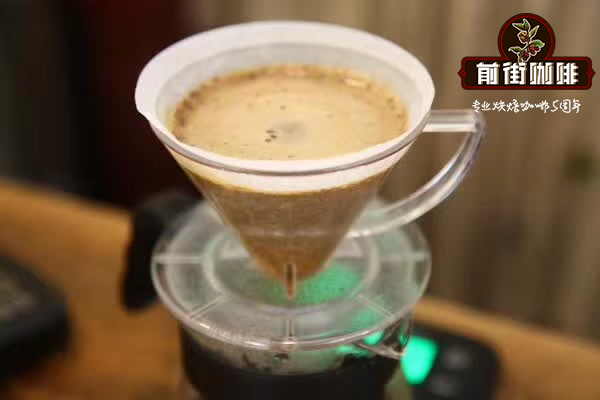What is the reason why espresso flows too fast? what is the reason for slow coffee flow and less fat?

Professional coffee knowledge exchange more coffee bean information please follow the coffee workshop (Wechat official account cafe_style)
One | Italian extraction
Espresso as a commercial product occupies the vast majority of the market share, it is fast, fragrant, can be paired with a variety of ingredients. But all espresso requires a base-espresso.
Among the several elements of Italian concentrated extraction, coffee powder is the key.
Coffee powder keywords: grinding, cloth powder, filling and pressing. Disorderly extraction can lead to insufficient or over-extraction of coffee.
We don't discuss the proportion of each type of beans in each coffee powder if you use blended coffee beans, because to do so, you may need more than two bean grinders (except SOE).
Let's first analyze the state of Italian extraction. The coffee liquid "dripped" for quite a long time after the beginning of extraction, it can be considered that the degree of grinding is too fine to block the passage of water, and the exuberant exhaust of coffee + grinding is the reason why the first stage of extraction is abnormal.
With regard to the state of coffee liquid, in the middle of the extraction, the diversion port on the left finally came out of the water column, while the right side was still dripping, and there was a great difference in the color of the coffee liquid from the two sides, especially the dark color on the right side, which shows that the interior of pressed powder is uneven. 1: uneven distribution of powder, more coffee powder in the right half than in the left half, higher density after compaction leads to uneven extraction on the two sides. 2: grinding problem, there are large lumps of powder more distributed in the right half of the powder bowl, the density of the powder will be higher than the loose coffee powder, resulting in insufficient extraction of some coffee and over-extraction of some coffee, the color of the coffee liquid will be very uneven.
According to this pressed powder, we can see that there is a lot of coffee powder on the side, which may be left after pressing the powder without cleaning, or there is another possibility: your powder hammer and bowl do not match. In addition, pressed powder indentation is very deep, indicating that the amount of powder is too much.
Then look at the powder bowl after deducting pressed powder. We have talked about how to judge the extraction problem before. The residual coffee liquid on the powder bowl like this is very dark, but the extraction is very serious.
Powder ball
Powder distribution gap
The voids here include internal voids and surface voids.
The internal gap is just the opposite of the powder ball, the looser part of the pressed powder makes the water pass easily, maybe at first your coffee liquid flows slowly (blocked by gas), and then suddenly whitening and the flow increases, there is a "channel", and the channel is formed from the loose place inside your pressed powder, so we should pay attention to the uniform distribution when loading powder into the powder bowl.
Surface gap is easy to understand, that is, whether you use your fingers or tools to assist, the surface of your pressed powder should be uniform and seamless before powder pressing. Because the head is to put water pressure over pressed powder, no matter where there is uneven density, the extraction will be uneven.
Finally, the extraction time is too long, which is also the reason for over-extraction.
Through the above analysis, we can apply to the actual adjustment.
First of all, the amount of powder.
In order to get a stable product, a fixed amount of powder is necessary, otherwise your coffee will be strong and weak, and if there is more than one barista at the bar, then a fixed amount of powder is the first element of your consistency.
Each coffee machine matches the powder bowl will have a capacity standard, we will usually weigh the powder according to this standard. Whether it is too much or too little, a cup of incorrect Italian will be extracted, especially if too much powder is used, the ultra-fine powder is easy to be sucked back into the water distribution network and cause unnecessary damage to the machine.
If it is due to grinding too fine, the knife head of the bean grinder is not cleaned for a long time, and the knife head of the bean grinder is worn, please check and rectify it one by one according to the actual situation. Of course, the relationship between beans will also have, the use of oily deep-roasted coffee beans, the problem of dough is inevitable.
If we are using a bean grinder and coffee machine for the first time, we can first grind a little to observe: fine the degree of grinding, and then adjust it while grinding, and we will find that the state of the powder changes from large to small, and then to almost no powder. Then generally speaking, the appearance of a small ball of powder (static electricity) is a more appropriate degree of grinding. You can try to make a cup of double concentration, and then adjust it according to the time of 25 ±3 seconds and the amount of extraction = powder × 2. Finally, remember to try to confirm the flavor!
Check the pressing powder
Why did you skip the cloth powder? Because we have talked a lot about cloth powder before, and the right cloth powder does not mean that the pressing powder is correct! This is a test of finger skill. The following is only for ordinary pink hammers.
Our habit is to use 3 fingers (thumb, index finger, middle finger), 3 points to "touch" to determine whether the pressure is flat. But if you are a novice, there is a good way to check whether the powder is flat, although it is slow, but you can directly judge and adjust ~ see the following figure:
After pressing the powder, hold the whole handle like this, and touch with 2 thumbs to feel whether the edge of the powder hammer is parallel to the powder bowl, and then make fine-tuning according to the height, remember that it is just fine-tuning and leveling, and you can't press it down with your thumb.
END
Important Notice :
前街咖啡 FrontStreet Coffee has moved to new addredd:
FrontStreet Coffee Address: 315,Donghua East Road,GuangZhou
Tel:020 38364473
- Prev

Do you know what substances are in coffee? what's the effect of protein content in coffee?
Professional coffee knowledge exchange more information about coffee beans Please pay attention to the coffee workshop (Wechat official account cafe_style) the chemical composition of coffee beans is very complex, of which carbohydrates account for the most. Coffee beans contain a variety of carbohydrates, accounting for 60% of the total weight of raw coffee beans, as well as some protein, fat, tannin, caffeine, minerals and others.
- Next

How fine espresso coffee powder is correct | how fine it takes to make espresso powder.
Professional coffee knowledge exchange more coffee bean information Please pay attention to the coffee workshop (Wechat official account cafe_style) thickness should be proportional to the extraction time coffee grinding will directly affect the extraction time and extraction rate. The finer the coffee is ground, the denser the powder layer is, the more coffee powder particles come into contact with hot water, the greater the extraction resistance, the easier it is to prolong the extraction time, and
Related
- Beginners will see the "Coffee pull flower" guide!
- What is the difference between ice blog purified milk and ordinary milk coffee?
- Why is the Philippines the largest producer of crops in Liberia?
- For coffee extraction, should the fine powder be retained?
- How does extracted espresso fill pressed powder? How much strength does it take to press the powder?
- How to make jasmine cold extract coffee? Is the jasmine + latte good?
- Will this little toy really make the coffee taste better? How does Lily Drip affect coffee extraction?
- Will the action of slapping the filter cup also affect coffee extraction?
- What's the difference between powder-to-water ratio and powder-to-liquid ratio?
- What is the Ethiopian local species? What does it have to do with Heirloom native species?

